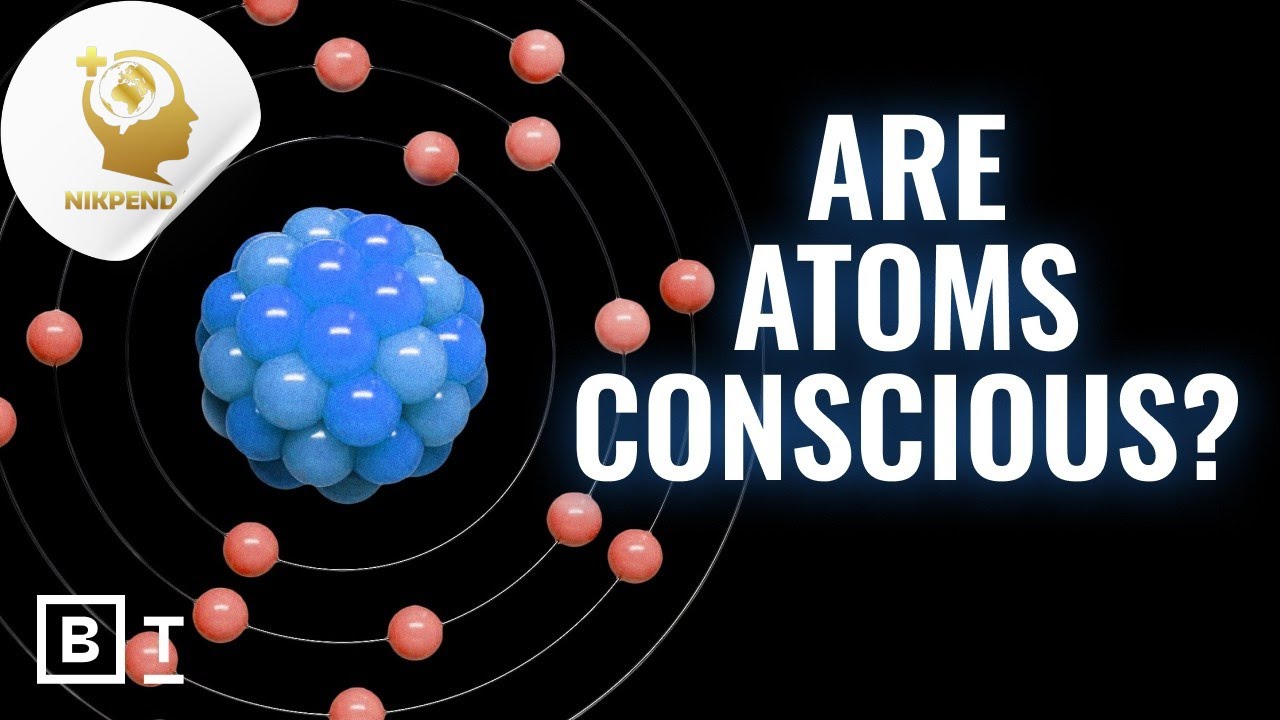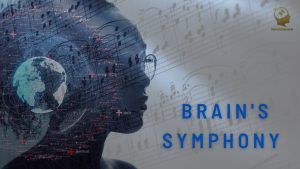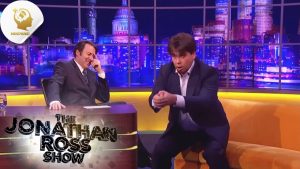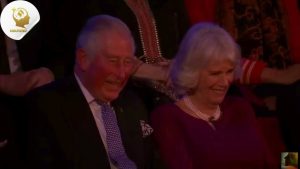
Speaking
Listening
Reading
Writing
Speaking
Listening
Reading
Writing
Beginner
- Task 1: Word Pairings and Definitions. Students are given a list of words from the video , such as consciousness, experience, brain, feel, and vision. They must match each word to a simple definition or its opposite, then say the word and its definition aloud. This task builds foundational vocabulary and pronunciation.
- Task 2: Simple Sentence Completion. Students listen to short clips from the videoand complete simple sentences. For example, after listening to the section about the bat, they would complete the sentence: “A bat uses sonar to get a picture of its world, but we use vision.” This helps them practice listening for specific, context-rich vocabulary and simple grammatical structures.
- Task 3: Retelling a Simple Story. Students listen to a short story from the video , such as the example of the infant. They then retell the story in their own words, using simple sentences. For example, “A baby is not capable of thought, but it can still feel things like pressure and heat.” This task helps develop basic narrative skills and reinforces vocabulary.
Intermediate
- Task 1: Explaining a Complex Idea. Students listen to the speaker’s explanation of locked-in syndrome. They then explain in their own words what locked-in syndrome is, using the example of Jean-Dominique Bauby. They should be able to articulate how his case challenges the assumption that behavior is a sign of consciousness.
- Task 2: Role-play: Asking and Answering Questions. Students listen to the speaker’s two main questions about consciousness (Is there evidence we can find from outside a system that tells us if it’s conscious? Is consciousness doing something?). In pairs, one student will ask one of the questions, and the other will answer with the speaker’s response and a supporting example (e.g., the bat, the bear). This task helps them practice asking and answering open-ended questions and summarizing a complex argument.
- Task 3: Summarizing a Key Concept. Students listen to the section about the difference between fragile and resilient They then summarize each of these concepts in a short, clear paragraph, explaining what the speaker says about each one. This task requires them to listen for and synthesize multiple points from a longer segment.
Advanced
- Task 1: Delivering a Short Presentation. Students prepare and deliver a short presentation on one of the main concepts from the video(the argument for panpsychism, the critique of our intuitions about consciousness, or the binding process in the brain). They must define the concept, explain its core principles, and use examples from the videoto support their explanation.
- Task 2: Group Discussion and Debate. Students participate in a guided discussion about the speaker’s thought experiment on plants. They are asked to summarize the speaker’s point and then debate whether they agree or disagree, supporting their arguments with examples from the videoand their own observations. This task promotes higher-level critical thinking and conversational skills.
- Task 3: Storytelling and Personal Reflection. Students listen to the speaker’s story about Albert Einstein and his intuitions. They then share a personal story of their own about a time they had a strong intuition or a complex idea that was difficult to express. They should try to use some of the key vocabulary and concepts from the videoto describe their experience. This task connects the aural comprehension of complex ideas with the ability to express personal experiences in a nuanced way.
Beginner
- Listening for Key Words.
Students listen to the monologue and identify key vocabulary. For example, they’re given a list of words like consciousness, brain, bat, feeling, sound, vision and must check them off as they hear them. This task helps learners recognize core vocabulary in a complex spoken context.
- Simple True/False Statements.
After listening to a specific section (e.g., the part about the bat or the infant), students are given a series of statements and decide if they’re true or false. For example: “A bat uses its eyes to see the world” (False) or “An infant has no felt experiences” (False). This activity helps learners extract specific, explicit details.
- Simple Question Answering.
Students listen to short, distinct sections and answer simple “wh-” questions. For example: “What is the name of the author?” (Anukica Harris) or “What does the author say a bat uses to move through the world?” (sonar). This task focuses on identifying and retrieving basic facts.
Intermediate
- Listening for Definitions.
Students listen for the speaker’s definition of consciousness. They write down the different terms she uses interchangeably, such as awareness, felt experience, and sentience. This task helps them understand how a speaker defines a complex, abstract concept.
- Explaining an Analogy.
Students listen to the speaker’s analogy of consciousness as something “much more like gravity.” They then explain in their own words what she means by this comparison. This task requires learners to understand a metaphor and its underlying meaning.
- Summarizing a Case Study.
Students listen to the story of Jean-Dominique Bauby and his locked-in syndrome. They must summarize his story, explaining his condition and how he was able to communicate, and why his case is an example of consciousness without outward behavior. This task requires synthesizing information from a narrative.
Advanced
- Analyzing a Complex Argument.
Students listen to the speaker’s two main questions about consciousness (Is there evidence from outside a system that tells us if it’s conscious? Is consciousness doing something?). They then explain her argument for why our intuitions about these questions are misleading, using her examples of Jean-Dominique Bauby and the bear. This task demands a high level of comprehension and the ability to follow a complex, multi-point argument.
- Comprehensive Note-taking.
Students listen to the entire monologue and take detailed notes on the various topics discussed, such as panpsychism, the binding process, and shared experience. They must organize their notes to show the logical flow of the speaker’s argument. This task helps students practice organizing and retaining information from a sustained, academic discourse.
- Critical Evaluation.
Students listen for the speaker’s thought experiment about plants. They must then describe the experiment and critically evaluate her conclusion. For example, they can discuss whether they think this is a valid way to explore the topic of consciousness and whether they are convinced by her argument. This task requires students to not only understand the content but also to form and articulate their own critical opinion.
Beginner
- Task 1: Vocabulary Matching. Students read a list of simple words from the videoand match each to a provided definition or simple synonym. Words could include: consciousness, experience, brain, sound, vision. This task helps build foundational vocabulary.
- Task 2: Basic Comprehension Questions. Students read a short, coherent section of the videoand answer simple “wh-” questions to find explicit information. For example, “What does a bat use to move through the world?” or “What is the name of the memoir written by Jean-Dominique Bauby?” This focuses on literal comprehension and detail extraction.
- Task 3: Simple True/False Statements. Students read a series of statements based on a short segment of the videoand decide if each is true or false. For instance, “Consciousness can exist in an organism that is not capable of thought” (True) or “Jean-Dominique Bauby was able to move his entire body” (False). This practice reinforces reading for explicit details.
Intermediate
- Task 1: Explaining an Analogy. Students read the videoand focus on the analogy of consciousness being “much more like gravity.” They then write a short paragraph explaining the comparison, using their own words to describe the speaker’s implied meaning. This task helps learners understand and articulate figurative language.
- Task 2: Identifying and Explaining a Complex Idea. Students read the section about locked-in syndrome. They then write a paragraph explaining what this condition is and how Jean-Dominique Bauby’s case challenges the assumption that consciousness requires outward behavior. This task requires students to connect a specific example to a broader, more complex idea.
- Task 3: Analyzing Cause and Effect. Students read the section about the brain’s “binding processes” and the example of playing the piano. They write a short paragraph explaining how the brain processes different sensory inputs (cause) and creates the illusion of a single moment in time (effect).
Advanced
- Task 1: Analyzing Argument Structure. Students read the entire videoand write a detailed outline of the speaker’s main arguments. They should identify her central thesis (that our intuitions about consciousness may be wrong) and the two questions she poses to support it. This task requires a high-level understanding of the monologue’s overall structure and logical flow.
- Task 2: Examining a Thought Experiment. Students read the section where the speaker discusses her “thought experiment” about plants. They then write an essay (2-3 paragraphs) that explains the experiment, analyzes its purpose, and discusses its implications for how we perceive the world.
Task 3: Summarizing and Critiquing a Scientific Argument. Students read the entire videoand write an essay that summarizes the speaker’s core argument that consciousness may be a fundamental property of the universe rather than a byproduct of complex brains. They should also include a brief critique of the argument, discussing its strengths and weaknesses from a scientific or philosophical perspective.
Beginner
- Task 1: Vocabulary Matching and Writing. Students read a list of key words from the videolike consciousness, experience, and brain. They match each word to its simple definition from the text (e.g., consciousness is everything we know and experience) and then write a simple sentence using each word. This task helps build a foundational vocabulary and reinforces spelling and sentence structure.
- Task 2: Simple Summary. Students read a short, specific section of the video , such as the example of the bat. They then write a few simple sentences to summarize how a bat experiences the world differently than a human. This task helps learners practice summarizing a key idea in their own words.
- Task 3: Sentence Completion. Students are given a short passage from the videowith key words missing (e.g., “The study of consciousness has largely been relegated to neuroscience, which makes a lot of sense because we have assumed that the organisms that are conscious are the ones that are most like us.”). They read the videoand write in the missing words to complete the sentences. This task helps learners practice spelling and writing specific words in a meaningful context.
Intermediate
- Task 1: Explaining a Complex Idea. Students read the section about locked-in syndrome. They then write a paragraph explaining what this condition is and how Jean-Dominique Bauby’s case challenges the assumption that consciousness requires outward behavior. This task requires students to connect a specific example to a broader, more complex idea.
- Task 2: Analyzing a Cause-and-Effect Relationship. Students read the section about the brain’s “binding processes” and the example of playing the piano. They write a short paragraph explaining how the brain processes different sensory inputs (cause) and creates the illusion of a single moment in time (effect).
- Task 3: Argumentative Paragraph. Students read the videoand write a paragraph arguing for or against the speaker’s claim that consciousness may be a more basic phenomenon in nature, similar to gravity. They must use at least one specific idea from the videoto support their point.
Advanced
- Task 1: Analytical Essay. Students read the entire videoand write an essay analyzing the speaker’s arguments about consciousness. They should discuss her central thesis (that our intuitions about consciousness may be wrong) and how she uses different examples (the bat, the person with locked-in syndrome, the binding processes) to support it.
- Task 2: Creative Writing: A New Thought Experiment. Students read the section where the speaker discusses her “thought experiment” about plants. They then write a short essay that describes a new thought experiment of their own to explore a scientific or philosophical concept. They should follow a similar structure to the speaker’s: propose a scenario, and then discuss what it reveals about our perceptions.
- Task 3: Critical Analysis. Students read the entire videoand write an essay that summarizes the speaker’s core argument that consciousness may be a fundamental property of the universe rather than a byproduct of complex brains. They should also include a brief critique of the argument, discussing its strengths and weaknesses from a philosophical or scientific perspective.





